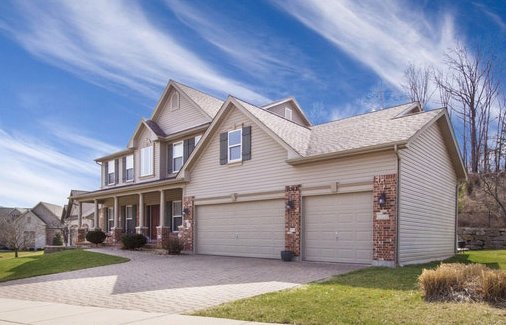The siding of our home is dinged! When we think about damage from hail storms we usually first think about roof. Roof damage is indeed a cause for concern, but we shouldn’t forget about our exterior siding. Our home exterior serves not only in making our home look great to visitors. It works to protect the entire structure from water, insects, and other destructive elements. Just like the roof, siding can be vulnerable to wind-driven hail and flying debris that often accompanies heavy storms.
Need a Trained Eye?
If you suspect that your siding may be damaged, it is always best to contact a reputable professional siding company. Signs of damage can be subtle and challenging for the untrained eye. At times it may be difficult to spot and even when you see it, a homeowner may not be able to determine if it warrants a simple repair or a complete residing job.
Depending on what caused the damage to your siding, the repairs may be covered by your homeowner’s insurance. It’s important not to let any damage wait too long since your insurance company may deny a claim.
After the Storm
Whether you are doing an end of season siding checkup or assessing damage made by a passing storm, there are a few important things you should look for. Regardless of the type of siding your home has, cracking and chipping can be signs of underlying damage. Moisture can seep behind the opening. Left unrepaired this can cause severe damage.
Holes and Punctures
Hail and flying debris can be a particular problem when it comes to punctures in your siding. Like cracks and chips, holes allow water to reach the internal structure of your home and create the perfect environment for mold, mildew, and fungus.
Dings and Dents
Vinyl and metal siding are particularly vulnerable to dings and dents. This type of damage can be difficult for the untrained eye to see. Small indentations can hold water and be starting areas for mold growth, eventually weakening your siding material.
When it comes to siding, water is not a friend. Be sure to look for signs that water may be causing your siding to degrade.
Get a Local Expert
When choosing a contractor to help you assess damage or make repairs, be sure to use a business with ties to the area. If a freak storm did the damage, your area might be flooded with repair companies who sweep in, make repairs, and leave.
Unfortunately, these types of companies do not always have the customer’s best interests at heart. Look at the company history, reviews, and check the Better Business Bureau rating. You also want to ensure that the company you choose is an expert in the repair and replacement of the type of siding your home has. Wood, vinyl, metal, brick, and stone are all popular choices but not every contractor is accustomed to working with all materials.
Your Investment
Your siding’s primary job is to protect one of your most significant investments. If you take care of your siding, make repairs when needed, and respond quickly to damage, it will give protection to your home and your family for many years.


